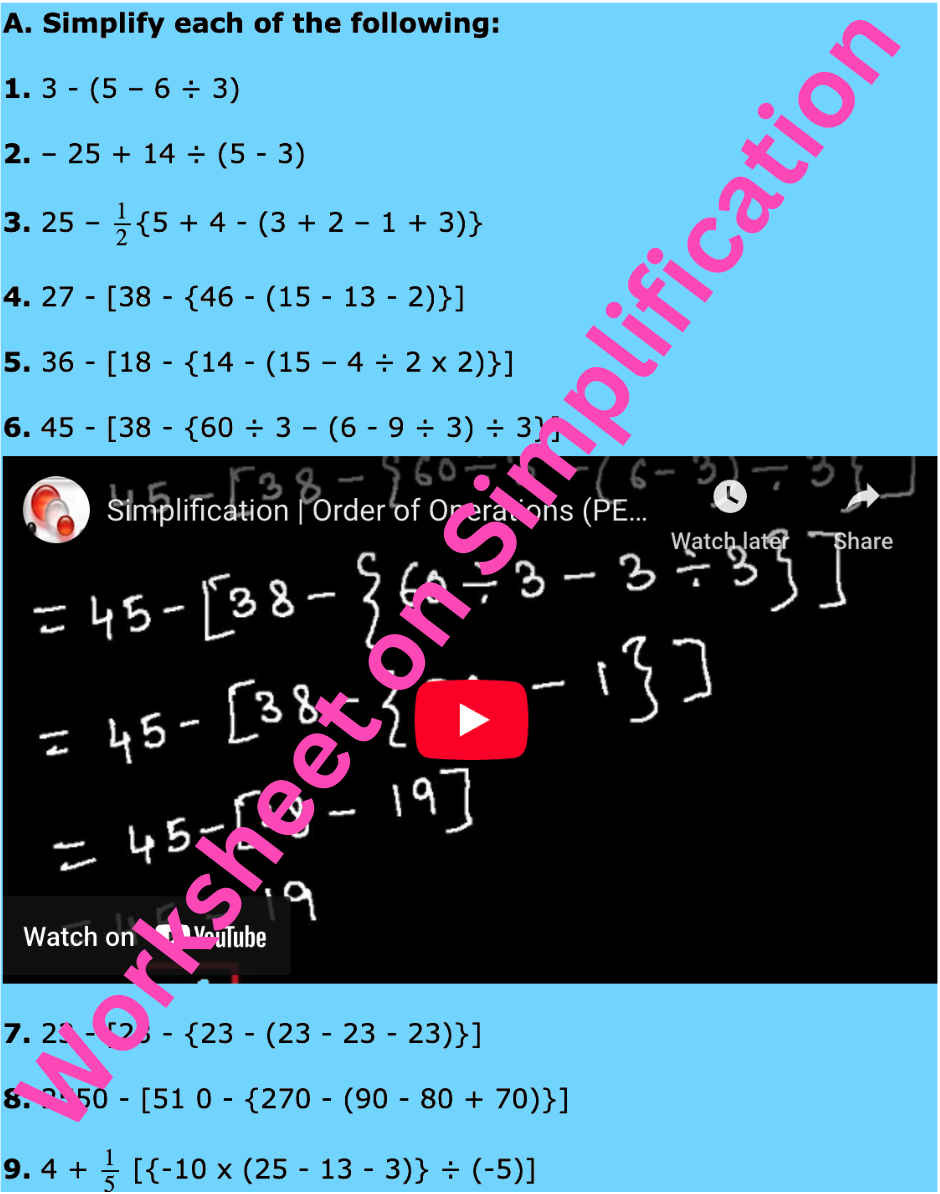Dividing 1-Digit Number
Here we will learn dividing 1-digit number.
It is Emily's birthday party. Emily has bought 12 balloons. Emily gives 1 balloon each to 4 of her friends John, David, Olivia and Sophia. they are helping her to decorate her room.
Emily has now 8 balloons with her. She gives 1 more balloon to each of her 4 friends again. She is left with 4 balloons now.
She decides to give 1 more balloon to all. Now, they have 3 balloons. Emily has got no more balloons left with her.
12 balloons have been equally distributed among 4 friends. Each of then have got 3 balloons.
Equal distribution is called division. The division fact is written with division symbol.
12 ÷ 4 = 3
Note: We use symbol '÷' for division.
We know that the repeated subtraction of the same number is expressed in short by division.
If there are 4 collections of lemons each having 2 lemons, how many lemons are there in total?
By the process of subtraction 2 is subtracted 4 times from 8 as 8 = 2 – 2 – 2 – 2 lemons.
By the process of division 8 ÷ 2 = 4 lemons
Thus, to get the answer we follow two process:
(i) Repeated subtraction and
(ii) Division
Hence, division and repeated subtraction of the same number are the same process.
Examples for dividing 1-digit number:
(i) Suppose a doctor gives his patient 8 tablets of medicine and asks him to take 2 tablets daily. How many days will the medicine continue?
First day the patient takes 2 tablets, 8 – 2 = 6 tablets will remain.
Second day the patient will take 2 tablets, 6 – 2 = 4 tablets will remain.
Third day the patient will take 2 tablets, 4 – 2 = 2tablets will remain.
Fourth day the patient will take 2 tablets, 2 – 2 = 0 tablets will remain.
Thus, 8 – 2 – 2 – 2 – 2 = 0
or, 8 – (2 + 2 + 2 + 2)
or, 8 – 8 = 0
The medicine lasts 4 days, as 2 is subtracted repeatedly 4 times from 8.
We see 2 is subtracted 4 times from 8.
(ii) There are 9 packs of cookies. How many children can get cookies, if 3 cookies are given to each child.
First child gets 3 packs of cookies so, 9 – 3 = 6 cookies remain
Second child gets 3 packs of cookies so, 6 – 3 = 3 cookies remain
Third child gets 3 packs of cookies so, 3 – 3 = 0 cookies remain
9 – 3 – 3 – 3 = 0
or, 9 – (3 + 3 + 3) = 0
or, 9 – 9 = 0
3 packs of cookies are taken out to give the number of children as 3.
Hence, repeated subtraction and division are the same process.
In actual process the dividend is divided by the divisor in the following ways:
The sign, ‘÷’ is
called the sign of division as ‘×’ is the sign of multiplication, ‘+’ is the
sign of addition and ‘-‘ is the sign of subtraction.
Thus, we learned how the actual process is used when the dividend is divided by the divisor to find the quotient and remainder.
From Dividing 1-Digit Number to HOME PAGE
Didn't find what you were looking for? Or want to know more information about Math Only Math. Use this Google Search to find what you need.
Recent Articles
-
Counting Numbers from 1 to 50 | Match the Number | Missing Numbers
Apr 04, 25 03:46 PM
In counting numbers from 1 to 50, recognize the numbers, count and then join the numbers in the correct number order. Here we mainly need eye-hand coordination to draw the picture and maintain the num -
Counting Eleven to Twenty with Numbers and Words |Numbers from 11 - 20
Apr 04, 25 03:21 PM
Counting eleven to twenty with numbers and words are explained below. One ten and one more is eleven. Eleven comes after ten. One ten and two more is twelve. Twelve comes after eleven. -
5th Grade BODMAS Rule Worksheet | PEMDAS | Order of operations|Answers
Apr 03, 25 03:11 PM
In 5th Grade BODMAS Rule Worksheet you will get different types of problems on mathematical expressions involving different operations, mathematical expression with 'brackets' and 'of' and simplifying… -
Worksheet on Simplification | Simplify Expressions | BODMAS Questions
Apr 03, 25 02:58 PM
In worksheet on simplification, the questions are based in order to simplify expressions involving more than one bracket by using the steps of removal of brackets. This exercise sheet -
Divisible by 2 Video |Test of Divisibility by 2 Trick| Rules| Examples
Apr 03, 25 10:25 AM
A number is divisible by 2 if the digit at unit place is either 0 or multiple of 2. So a number is divisible by 2 if digit at its units place is 0, 2, 4, 6 or 8.












New! Comments
Have your say about what you just read! Leave me a comment in the box below. Ask a Question or Answer a Question.